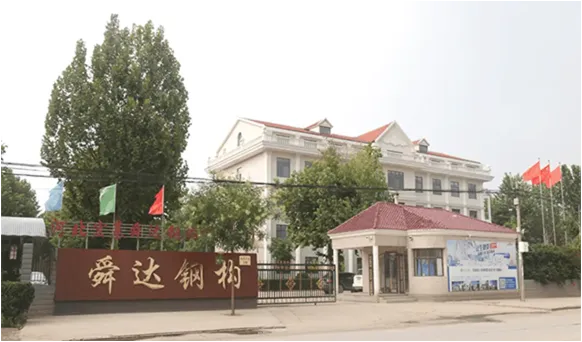- Afrikaans
- Albanian
- Amharic
- Arabic
- Armenian
- Azerbaijani
- Basque
- Belarusian
- Bengali
- Bosnian
- Bulgarian
- Catalan
- Cebuano
- Corsican
- Croatian
- Czech
- Danish
- Dutch
- English
- Esperanto
- Estonian
- Finnish
- French
- Frisian
- Galician
- Georgian
- German
- Greek
- Gujarati
- Haitian Creole
- hausa
- hawaiian
- Hebrew
- Hindi
- Miao
- Hungarian
- Icelandic
- igbo
- Indonesian
- irish
- Italian
- Japanese
- Javanese
- Kannada
- kazakh
- Khmer
- Rwandese
- Korean
- Kurdish
- Kyrgyz
- Lao
- Latin
- Latvian
- Lithuanian
- Luxembourgish
- Macedonian
- Malgashi
- Malay
- Malayalam
- Maltese
- Maori
- Marathi
- Mongolian
- Myanmar
- Nepali
- Norwegian
- Norwegian
- Occitan
- Pashto
- Persian
- Polish
- Portuguese
- Punjabi
- Romanian
- Russian
- Samoan
- Scottish Gaelic
- Serbian
- Sesotho
- Shona
- Sindhi
- Sinhala
- Slovak
- Slovenian
- Somali
- Spanish
- Sundanese
- Swahili
- Swedish
- Tagalog
- Tajik
- Tamil
- Tatar
- Telugu
- Thai
- Turkish
- Turkmen
- Ukrainian
- Urdu
- Uighur
- Uzbek
- Vietnamese
- Welsh
- Bantu
- Yiddish
- Yoruba
- Zulu
Nov . 06, 2024 06:23 Back to list
The Evolution and Significance of Industrial Buildings
Industrial buildings, often regarded as the backbone of economic development, have evolved significantly over the years. These structures, which range from factories and warehouses to research and development centers, play a crucial role in modern economies. Their design and construction reflect not only the industrial practices of their time but also the technological advancements and societal changes.
Historically, industrial buildings emerged during the Industrial Revolution in the 18th century, a period marked by rapid industrialization and urbanization. The need for large-scale production facilities led to the creation of factories. Early factories were often simplistic in design, focusing primarily on functionality. Materials such as brick and wood were commonly used, and the layouts were dictated by the production processes, which were often labor-intensive. The emergence of steam power and machinery transformed these spaces, allowing for faster production times and the building of larger structures.
As industries evolved, so did the architectural styles of industrial buildings. The late 19th and early 20th centuries saw the introduction of steel and reinforced concrete in construction. This innovation enabled the creation of taller buildings with open floor plans, which became essential for assembly lines and machinery layouts. The famous Ford River Rouge Complex in Michigan, built in the 1920s, exemplifies this trend, featuring vast spaces designed for efficient automobile manufacturing.
The design of industrial buildings is not just a matter of practicality; it also reflects the aesthetic values of its time. The Art Deco movement, for instance, influenced industrial architecture in the early 20th century, leading to buildings with streamlined forms and ornamental details. Similarly, Brutalism, with its raw concrete aesthetic, found expression in mid-century industrial designs. Today, architects often combine sustainability with aesthetics, leading to the concept of green industrial buildings that integrate environmental considerations into their design and operation.
industrial building

In recent years, there has been a shift towards repurposing old industrial buildings for new uses. The adaptive reuse of these structures is a testament to their historical significance and the changing demands of urban spaces. Factories that once produced textiles or automobiles have been transformed into lofts, commercial spaces, and cultural hubs. This trend not only preserves the architectural heritage of a region but also promotes sustainable practices by reducing the need for new construction.
Moreover, the rise of technology and automation has led to the emergence of smart industrial buildings. These facilities incorporate advanced technologies such as IoT devices, AI, and robotics, enhancing operational efficiency and productivity. Smart factories can monitor equipment performance in real time, predict maintenance needs, and optimize supply chain management. This shift is indicative of how the industrial landscape is continuously adapting to technological advancements.
The significance of industrial buildings extends beyond their economic contributions. They are vital components of urban ecosystems, influencing the character and identity of cities. Successful industrial spaces often serve as landmarks, representing the industrial heritage of an area while providing modern amenities and services. Communities are increasingly recognizing the value of these structures as they contribute to local culture and identity, making them essential to the narrative of urban development.
In conclusion, industrial buildings are more than mere structures; they are a reflection of historical evolution, technological progress, and architectural innovation. From their humble beginnings during the Industrial Revolution to their current role in sustainable and smart manufacturing, industrial buildings embody the dynamic relationship between industry, society, and the environment. As we continue to face challenges such as urbanization and environmental sustainability, the importance of these buildings will only continue to grow. Embracing their history while innovating for the future is key to creating resilient urban spaces that honor both heritage and progress.
-
How Do Prefabricated Steel Structures Transform Modern Construction?
NewsJul.14,2025
-
How Do Prefabricated Metal Buildings Redefine Modern Construction?
NewsJul.14,2025
-
How Do Prefab Insulated Metal Buildings and Steel Structures Revolutionize Modern Construction?
NewsJul.14,2025
-
How Do Pre - Engineered Steel Structures Redefine Modern Construction?
NewsJul.14,2025
-
Advancing Modular Construction with Prefabricated Metal Structures
NewsJul.14,2025
-
Advancing Industrial Infrastructure with Prefabricated Steel Solutions
NewsJul.14,2025
Products categories
Our Latest News
We have a professional design team and an excellent production and construction team.












